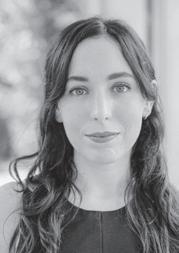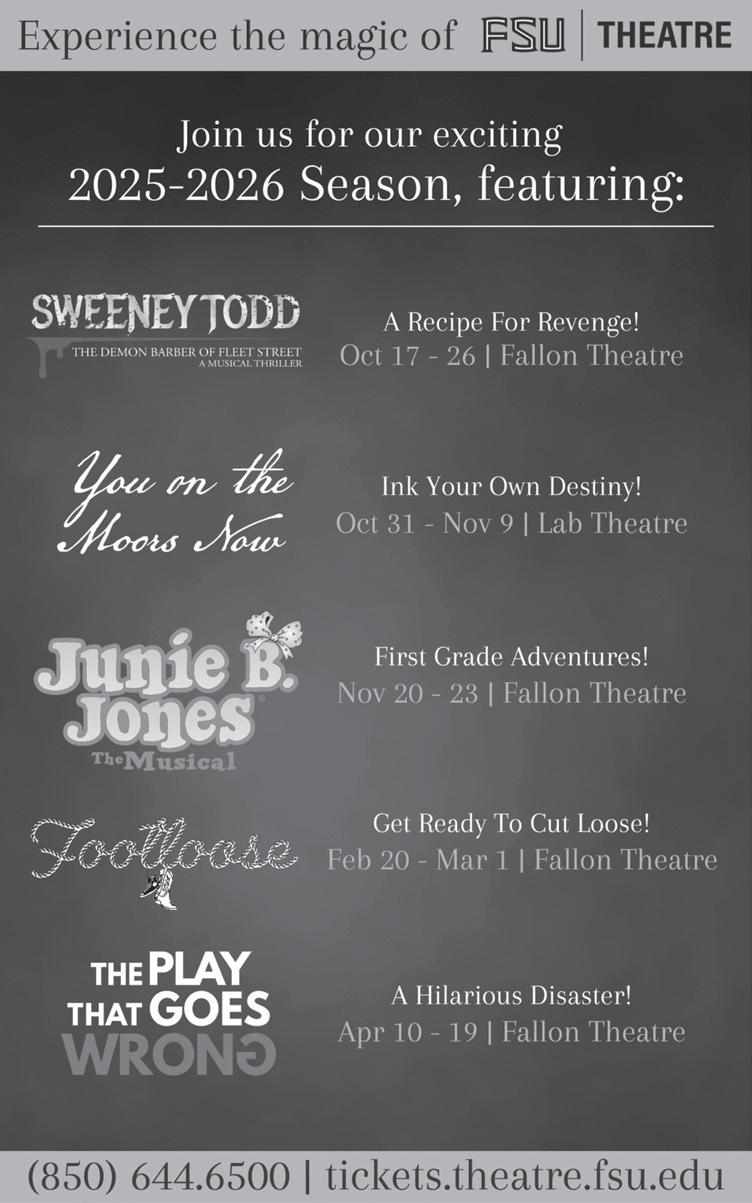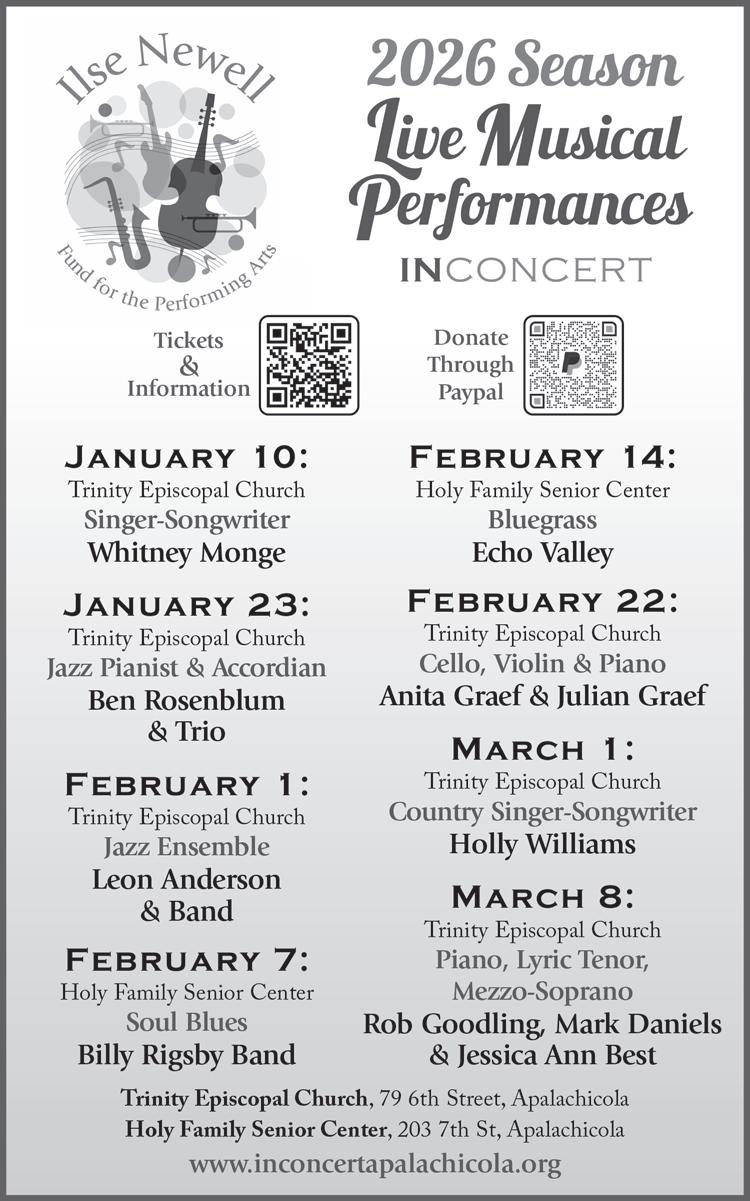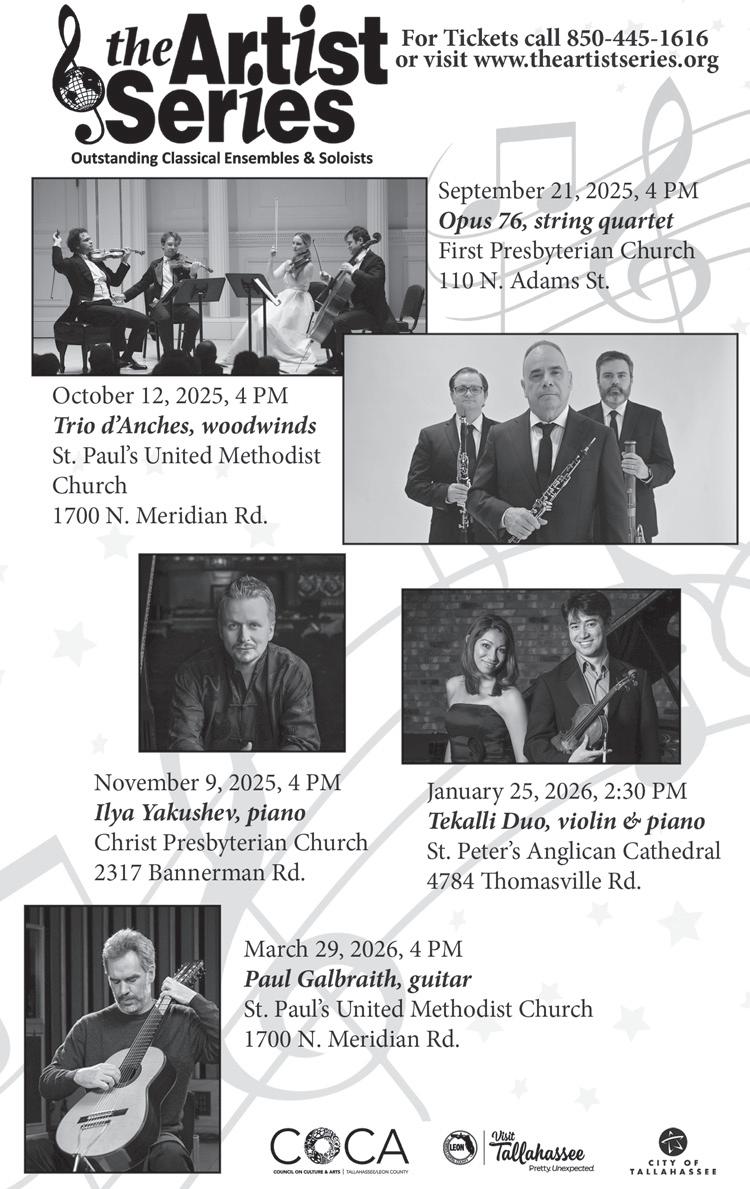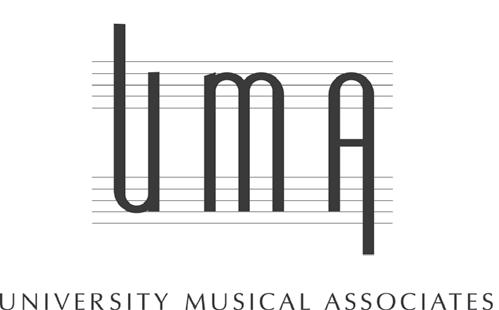PROGRAM
The Bamboula: Rhapsodic Dance Samuel Coleridge-Taylor (1875–1912)
Thomas Roggio, conductor
Concerto for the Left Hand in D Major, M. 82 Maurice Ravel Lento (1875–1937) Allegro
Molly Reid, piano
INTERMISSION
Nocturne for String Orchestra
Pini di Roma (Pines of Rome)
Alexander Borodin (1833–1887) arr. Malcolm Sargent (1898–1977)
Ottorino Respighi
I pini di Villa Borghese (Pines of the Villa Borghese) (1879-–1936)
Pini presso una catacomba (Pines Near a Catacomb)
I pini del Gianicolo (Pines of the Janiculum)
I pini della via Appia (Pines of the Appian Way)
Please refrain from talking, entering, or exiting while performers are playing. Food and drink are prohibited in all concert halls. Please turn off cell phones and all other electronic devices. Please refrain from putting feet on seats and seat backs. Children who become disruptive should be taken out of the performance hall so they do not disturb the musicians and other audience members.

Alexander Jiménez serves as Professor of Conducting, Director of Orchestral Activities, and String Area Coordinator at the Florida State University College of Music. Prior to his appointment at FSU in 2000, Jiménez served on the faculties of San Francisco State University and Palm Beach Atlantic University. Under his direction, the FSU orchestral studies program has expanded and been recognized as one of the leading orchestral studies programs in the country. Jiménez has recorded on the Naxos, Neos, Canadian Broadcasting Ovation, and Mark labels. Deeply committed to music by living composers, Jiménez has had fruitful and long-term collaborations with such eminent composers as Ellen Taafe Zwilich and the late Ladisalv Kubík, as well as working with Anthony Iannaccone, Krzysztof Penderecki, Martin Bresnick, Zhou Long, Chen Yi, Harold Schiffman, Louis Andriessen, and Georg Friedrich Haas. The University Symphony Orchestra has appeared as a featured orchestra for the College Orchestra Directors National Conference and the American String Teachers Association National Conference, and the University Philharmonia has performed at the Southeast Conference of the Music Educators National Conference (now the National Association for Music Education). The national PBS broadcast of Zwilich’s Peanuts’ Gallery® featuring the University Symphony Orchestra was named outstanding performance of 2007 by the National Educational Television Association.
Active as a guest conductor and clinician, Jiménez has conducted extensively in the U.S., Europe, and the Middle East, including with the Brno Philharmonic (Czech Republic) and the Israel Netanya Chamber Orchestra. In 2022, Jiménez led the Royal Scottish National Orchestra in a recording of works by Anthony Iannaccone. Deeply devoted to music education, he serves as international ambassador for the European Festival of Music for Young People in Belgium, is a conductor of the Boston University Tanglewood Institute in Massachusetts and serves as Festival Orchestra Director and artistic director of the Blue Lake Fine Arts Camp in Michigan. Jiménez has been the recipient of University Teaching Awards in 2006 and 2018, The Transformation Through Teaching Award, and the Guardian of the Flame Award which is given to an outstanding faculty mentor. Jiménez is a past president of the College Orchestra Directors Association and served as music director of the Tallahassee Youth Orchestras from 2000-2017.
ABOUT THE FEATURED SOLOIST
Praised for her “spellbinding” performances that feature “structural, long phrasing,” American pianist Molly Reid brings a distinctive voice to classical piano performance. Her command of sound and style has consistently earned her top prizes in competitions including the MTNA-Steinway & Sons Young Artist Piano Competition, the Rosen-Schaffel Young Artist Competition, the Annual Keyboard Competitive Festival at Florida State University, and most recently, the 2025 Florida State University College of Music Doctoral Concerto Competition. With the ability to let “expressivity be [at the] forefront of technical control,” her playing communicates the music with refreshing vitality.
Molly began her piano studies at a young age with her parents, both classical pianists. Her principal teachers include Heidi Louise Williams and Rodney Reynerson, with additional study under Ney Fialkow, Junie Cho, and Eugene Pridonoff. She has performed in master classes with many renowned artists including Boris Giltburg, Hung-Kuan Chen, Boris Berman, and Ksenia Nosikova.
Equally accomplished as a scholar, Molly has presented papers and lecture-recitals at national and regional conferences across the United States. Her work has been published in the Journal of Music Theory Pedagogy and recognized with the Best Student Paper Award at the national Pedagogy into Practice Conference. In 2024, she was one of 100 women doctoral students in the U.S. and Canada to be honored with the internationally competitive P.E.O. Scholar Award.
Holding degrees from the University of Cincinnati College-Conservatory of Music (MM) and Appalachian State University (MM, BM), Molly is currently a dual doctoral candidate in piano performance (DM) and music theory (PhD) at Florida State University, where she teaches undergraduate music theory and is supported with a Legacy Fellowship.
NOTES ON THE PROGRAM
Coleridge-Taylor: The Bamboula: Rhapsodic
Dance
Samuel Coleridge-Taylor was born in the central London neighborhood of Holborn in 1875. Soon after his birth, his family moved to the outskirts of London to Croydon, where he would spend the rest of his life. Named after the famed poet, Samuel Taylor Coleridge, Coleridge-Taylor was born to Alice Hare Martin, a white Briton, and to Dr. Daniel Taylor, who was from Sierra Leone in West Africa. While Alice was pregnant, Dr. Taylor returned to West Africa, apparently not aware that Alice was pregnant, and never returned. Samuel would never know his father.
Coleridge-Taylor showed great talent for music and in 1890 he become a student in the renowned Royal College of Music in London. There he studied with Charles Villiers Stanford, who also claimed as his students such future luminaries as Ralph Vaughan Williams and Gustav Holst. Only the second black student to attend the College, Coleridge-Taylor was highly regarded among his peers and gained the attention of influential musicians of the day such as George Grove and Edward Elgar.
The Song of Hiawatha, a trilogy of three cantatas, would become Coleridge-Taylor’s bestknown works. Based on Henry Wadsworth Longfellow’s poem of the same name, he found great similarities between the Native American and African American experiences and gave that synergy voice in The Song of Hiawatha. He also found a personal connection to Hiawatha who, like him, spends part of the poetic narrative searching for his absent father.
In writing The Song of Hiawatha, Coleridge-Taylor associated himself with the antiimperialism and Pan-Africanism movements of the day. As a leading delegate in the first Pan-African Conference in London in 1900, Coleridge-Taylor would gain recognition among African Americans as a symbol of hope thanks to his successes as a composer in Britain. According to historian Jeffrey Green, “For people of African birth or descent he had a role as a leader: a person whose achievements were to international standards, and whose successes countered concepts of racial inferiority.” Coleridge-Taylor first came to the United States in 1904 where he was treated as a celebrity. He conducted performances of his own music, became the first black man in American to conduct a white orchestra, and was one of very few people of African descent to be invited to the White House, where he was honored by President Theodore Roosevelt. Sadly, his life was cut short in 1912 when he died suddenly of pneumonia. His legacy would live on until World War II through annual performances of The Song of Hiawatha at Royal Albert Hall from 19241939, during which time the work would be performed as often as Handel’s Messiah and Mendelssohn’s Elijah.
Coleridge-Taylor wrote The Bamboula: Rhapsodic Dance for Orchestra in 1910 for the Litchfield Choral Festival in Connecticut. The Bamboula is an African drum and corresponding dance accompanied by these drums that came to the United States from Haiti during the exodus of African slaves deported from Haiti to Louisiana, specifically New Orleans. These slaves were known to dance the Bamboula on the so-called Congo Square near the French Quarter. The first appearance of the Bamboula in art music is found in a work for piano of the same name by the American composer Louis Moreau Gottschalk in 1848.
Coleridge-Taylor’s work is composed for a large orchestra that includes two flutes and piccolo, pairs of oboes, clarinets, and bassoons, four horns, two trumpets, three trombones and tuba, timpani, snare drum, bass drum, cymbals, triangle, and orchestra bells, and strings. A grand fanfare featuring the brass choir opens the work and introduces the primary Bamboula theme, an energetic dotted rhythm in 2/4 time that permeates the work. Coleridge-Taylor’s mastery of harmony and orchestral texture is clearly on display.
A tranquil middle section turns our dance theme into a lyrical song passed between solo woodwinds with a gently undulating accompaniment from the strings. The strings take over the tranquil melody with increasing intensity before returning to the original tempo and spirit of the work. Performances of this work are exceptionally and sadly rare. It is an honor to share this masterpiece with our audience tonight.
– Alexander Jiménez
Ravel: Concerto for the Left Hand
About 1930, Ravel found himself simultaneously with two commissions for piano concertos, one from his longtime interpreter Marguerite Long, and the other from Paul Wittgenstein, a concert pianist who had lost his right arm in World War I. Ravel worked on both commissions at the same time, but the results were quite different. The G major concerto, composed for Ravel’s own use, but eventually given to Marguerite Long when Ravel realized he was too ill to perform it himself, is a three-movement concerto part brilliant, part ravishingly melancholy. The Concerto for the Left Hand, perhaps inevitably, is altogether more serious, one of the most serious of all the works of that urbane master.
Paul Wittgenstein was a remarkable member of a remarkable Viennese family. He was the brother of the philosopher Ludwig Wittgenstein, who also possessed considerable musical talent. Paul had barely begun his concert career when he was called into the Austrian reserves in 1914. Only a few months later he was wounded, and his right arm had to be amputated. After being captured by the Russians (when the army hospital in which he was located was overrun), Wittgenstein was exchanged as an invalid and returned to Vienna, where he resumed his concert career in the season of 1916-17. He quickly made a name for himself as a pianist with only one arm, and he induced many leading composers to write substantial works for him in all the genres—chamber and orchestral—that made use of a piano. Among those who responded to his requests were Richard Strauss, Franz Schmidt, Erich Wolfgang Korngold, Benjamin Britten, Sergei Prokofiev, Paul Hindemith, and, most famously, Ravel.
There are few sources of music for the left hand alone to which Ravel might have gone to study the problems involved, among them Saint-Saëns’s six studies for the left hand and Leopold Godowsky’s transcriptions for left hand alone of the Chopin etudes. He might also have seen Brahms’s mighty transcription for piano left-hand of the Bach D minor Chaconne for unaccompanied violin and Scriabin’s Prelude and Nocturne. But for the most part Ravel was on his own, especially as he wanted the piano part to be as full and active as if it were intended for a pianist who had both hands. The result, needless to say, is a fantastically difficult work perfectly gauged for the shape of the left hand (which can have, for example, a rather large stretch between the thumb and index finger in the higher pitch levels and the upper ends of chords, an arrangement that would be reversed if the piece were conceived for right hand).
Ravel once discussed his two piano concertos with the critic and musicologist M.D. Calvocoressi. Of the left-hand concerto he commented:
In a work of this sort, it is essential to avoid the impression of insufficient weight in the sound-texture, as compared to a solo part for two hands. So I have used a style that is more in keeping [than that of the lighter G major concerto] with the consciously imposing style of the traditional concerto.
The concerto is in one long movement divided into Lento and Allegro sections. Beginning low and dark in strings and contrabassoon, a long orchestral section avoids the first appearance of the soloist until a climax brings the piano in with a cadenza designed to show right off the bat that limiting the conception to a single hand does not prevent extraordinary virtuosity. Ravel describes this as being “like an improvisation.” It is followed by what Ravel called a “jazz section,” exploiting ideas he had picked up during his visit to America. “Only gradually,” he noted, “is one aware that the jazz episode is actually built up from the themes of the first section.” The level of virtuosity required by the soloist increases—if that is possible—to the end. Ravel rightly considered this, his last completed large-scale work, a supreme piece of illusion. Who can tell, just from listening, the nature of the self-imposed restriction under which he completed his commission?
– © Steven Ledbetter
Borodin: Nocturne for String Orchestra
The illegitimate son of a Russian prince, Borodin received a wide-ranging education that made him a precocious polyglot scientist and musician. As a composer, he became a member of the so-called Mighty Handful, Russian composers that included RimskyKorsakov, Mussorgsky, Balakirev, and Cui. However, he also became a noted chemist, so it is not surprising, perhaps, that his work list is shorter than probably any other composer of similar stature and the list is full of unfinished pieces.
He began the String Quartet No. 2 while on holiday in 1881. Because it often took years for him to complete multi-movement works, he wrote this work twenty years after his marriage, and the quartet was dedicated to his wife as an anniversary gift.
Borodin was a cellist, and it is clearly his voice in this beautifully lyrical work. The third movement of the quartet, Notturno (Nocturne) is one of the best known and most often arranged movements in the repertoire (musical theater fans may recognize it as the tune for “And This Is My Beloved” from Kismet). Tonight’s version by English conductor Malcolm Sargent is among the most often performed.
– Alexander Jiménez
Respighi: Pines of Rome
After Respighi moved permanently to Rome in 1913–at the time, a center of orchestral concerts in Italy–he turned more attention to the composition of instrumental music. His first big success was the symphonic poem, Fountains of Rome, from 1916, although it did not garner accolades immediately. But, by the early 1920s it was fast becoming an international hit, and he was on his way to world-wide recognition—not to speak of a much more secure financial future. He followed up on this success with two more symphonic poems evocative of his home: Pines of Rome (1924) and Roman Festivals (1926). Collectively, they are often known as his “Roman trilogy.” They all are showpieces for orchestra, spectacular evidence of his mastery of orchestration, vivid musical imagination, and flamboyant penchant for instrumental color. He had listened well to his predecessors who were successful in this vein.
Pines of Rome is cast into four movements, all using the conceit of pine trees that happen to be growing by various evocative Roman locations to tie everything together. Respighi scored the work for a large orchestra: the usual and familiar full complement, with additions of piano, organ, celesta, off-stage brass band, and (for the first time in musical history), a sound recording of a bird. All of these resources receive a full workout. Pines of Rome was an immediate hit; Toscanini was so enamored with it that he included it in the first concert—and nineteen years later, the last—that he conducted with the New York Philharmonic.
The first movement, “Pines of the Villa Borghese,” is a sparkling, lilting evocation of children playing on a Sunday morning, madly dashing about, full of youthful delight. The Villa Borghese is one of the largest public gardens in Rome, built in the informal English garden style, containing spectacular plantings, lakes, pathways, and buildings. It has long been a favorite with tourists and natives alike, and Respighi conjures up a bright musical context that depicts the cheerful setting. A filigree of attractive rhythmic figures and simple tunes clearly evoking childhood mirth sustains the fun-filled, light-hearted atmosphere. Woodwind trills, cheeky dissonances, glissandi in the harps and keyboards, high register brass, and the complete absence of “gloomy” low instruments sustain the joy.
It abruptly ends, though, as we enter the dark world of a catacomb. The second movement (“Pines Near a Catacomb”) is set in the malarial region of the Roman campagna, abandoned in ancient times, but with extraordinary stark beauty. The ominous, dark atmosphere of the burial caverns is aptly portrayed by most of the instruments that we did not hear in the first movement. Trombones, with the deepest of organ notes beneath them, don the garb of priests as they solemnly chant the melodies of the dead. The gloom is then broken by a shimmering solo trumpet, offstage in a lonely elegy. The chanting soon returns, building to a huge climax, more affirmatively, perhaps alluding to triumph over death. All soon dies down (no pun intended), as the brass returns to a crepuscular chant.
The “Pines of the Janiculum” is a tranquil visit at night to the prominent hill west of Rome where St. Peter is popularly thought to have been crucified, and which is now the site of a number of universities, colleges, and academies. It offers a spectacular view of Rome, and is named after the Roman god, Janus, who famously looked simultaneously in two opposite directions: the past and the future. This movement is a nocturne, opened by the gong and piano, introducing various woodwind solos that quietly evoke the moon on the pines. Apparently, a nightingale is perched in one of them, for as the music gradually fades away in trills, his song is faintly heard.
The nightingale is chased away, and the mood is ominously broken by the distant tread of the Roman Legions on the Appian Way (“Pines of the Appian Way”), beginning far off, perhaps in the morning mist, as they grow inexorably closer. A sinuous solo in the English horn adds a bit of mystery. Fanfares are heard, both in the orchestra and in the off-stage band that portrays the ancient Roman buccine—the large circular horns familiar from Roman mosaics. Everyone in the orchestra gradually joins in as the Legions march closer, and the music grows inevitably to a paroxysm of aural grandeur. It’s one of the most impressive moments in orchestral sound and never fails to please.
– © 2015 William E. Runyan
Violin 1
Jean-Luc Cataquet Santaella‡
Rachel Lawton
Masayoshi Arakawa
Javaxa Flores
Bailey Bryant
Keat Zhen Cheong
Mari Stanton
Emily Palmer
Francesca Puro
Stacey Sharpe
Elizabeth Milan
Abigail Jennings
Ilayda Ilbas
Violin 2
Ioana Popescu*
Christopher Wheaton
Sobin Son
Amanda Marcy
Samuel Ovalle
Alexa Dinges
Mariana Reyes Parra
Will Purser
Rose Ossi
Noah Johnson
Victoria Joyce
Carlos Cordero Mendez
Katherine Ng
Quinn French
Viola
Noel Medford*
Maya Johnson
Jeremy Hill
Tyana McGann
Hannah Jordan
Nathan Oyler
Yey Mulero
Spencer Schneider
Emelia Ulrich
Jonathan Taylor
Abigayle Benoit
Harper Knopf
University Symphony Orchestra Personnel
Alexander Jiménez, Music Director
Thomas Roggio, Graduate Associate Conductor
Cello
Mitchell George*
Noah Hays
Thu Vo
Natalie Taunton
Turner Sperry
Abbey Fernandez de Castro
Jake Reisinger
Sydney Spencer
Param Mehta
Ryan Wolff
Jaden Sanzo
Tia Stajkowski
Bass
Jarobi Watts*
Kent Rivera
Caleb Duden
Josh Dennis
Paris Lallis
Connor Oneacre
Flute
Pamela Bereuter*
Samuel Malavé
Kaitlyn Calcagino
Paige Douglas
Oboe
Gracee Myers**
Rebecca Johnson**
Steven Stamer
Rebecca Keith
English Horn
Gracee Myers
Clarinet
Jaxon Stewart**
Daniel Kim**
Hali Alex
Zhu Zhiyao
Bass Clarinet
Steven Higbee
Bassoon
Georgia Clement*
Timothy Schwindt
Hannah Farmer
Horn
Eric On*
Gio Pereira
Jeason Lopez
Allison Hoffman
Kate Warren
Trumpet
Avery Hoerman*
William Rich
Johniel Nájera
Noah Solomon
Trombone
Connor Altagen*
Elijah Van Camp-Goh
Bass Trombone
Maxwell Brower
Off-Stage Brass
Jeremiah Gonzalez
Sharavan Duvvuri
Avery Hoerman
Wayne Pearcy
Nathan Reid
Cayden Miller
Percussion
Darci Wright
Ian Guarraia
Jordan Brown
Matthew Korloch
Caitlin Wright
Harp
Ava Crook
Piano
Bryden Reeves
Celesta
Cristian Dirkhising
Orchestra Manager
Za’Kharia Cox
Orchestra
Stage Manager
Carlos Cordero Mendez
Orchestra
Librarians
Guilherme Rodrigues
Tom Roggio
Library
Bowing Assistant
Victoria Joyce ‡ Concertmaster * Principal ** Co-Principal
UNIVERSITY MUSICAL ASSOCIATES 2025-2026
Les and Ruth Ruggles Akers
Dr. Pamela T. Brannon
Dean’s Circle
Richard Dusenbury and Kathi Jaschke
Joyce Andrews
Patrick and Kathy Dunnigan
Kevin and Suzanne Fenton
Andrew and Karen Hoyt
Alexander and Dawn Jiménez
Jim Lee
Paula and Bill Smith
Margaret Van Every
Gold Circle
Albert and Darlene Oosterhof
Bob Parker
Todd and Kelin Queen
Karen and Francis C. Skilling
Bret Whissel
Sustainer
Stan and Tenley Barnes
Kathryn M. Beggs
Karen Bradley
Steve and Pat Brock
Suzi and Scott Brock
Brian Causseaux and David Young
James Clendinen
Mary and Glenn Cole
Sandy and Jim Dafoe
John S. and Linda H. Fleming
Joy and James Frank
William Fredrickson and Suzanne Rita Byrnes
Ruth Godfrey-Sigler
Ken Hays
Dottie and Jon Hinkle
Todd S. Hinkle
The Jelks Family Foundation, Inc.
Emory and Dorothy Johnson
Gregory and Margo Jones
Anne van Meter and Howard Kessler
William and Susan Leseman
Annelise Leysieffer
Linda and Bob Lovins
Marian and Walter Moore
Ann W. Parramore
Almena and Brooks Pettit
David and Joanne Rasmussen
Edward Reid
Mark and Carrie Renwick
Richard Stevens and Ron Smith
William and Ma’Su Sweeney
Martin Kavka and Tip Tomberlin
Steve Moore Watkins and Karen Sue Brown
Stan Whaley and Brenda McCarthy
Kathy D. Wright
Joe and Susan Berube
Marcia and Carl Bjerregaard
Sara Bourdeau
David and Carol Brittain
Bonnie and Pete Chamlis
Rochelle Davis
Judith Flanigan
Harvey and Judy Goldman
Jerry and Bobbi Hill
Judith H. Jolly
Arline Kern
Jonathan Klepper and Jimmy Cole
Keith Ledford
Judy and Brian Buckner
Marian Christ
Sarah Eyerly
Gene and Deborah Glotzbach
Sue Graham
Laura Gayle Green
Donna H. Heald
Carla Connors and Timothy Hoekman
Jane A. Hudson
Jayme and Tom Ice
Stephanie Iliff
William and DeLaura Jones
Jane Kazmer
Patron
Joan Macmillan
Joel and Diana Padgett
Karalee Poschman
Mary Anne J. Price
Magda Sanchez
Jill Sandler
Jeanette Sickel
Susan Sokoll
George Sweat
Sylvia B. Walford
Geoffrey and Simone Watts
Natalie Zierden
Associate
Paige McKay Kubik
Joe Lama
Jane LeGette
Eric Lewis
Cindy Malaway
Lealand and Kathleen McCharen
Dr. Linda Miles
Becky Parsons
William and Rebecca Peterson
Susan Stephens
Allison Taylor
Karen Wensing
Lifetime Members
Willa Almlof
Florence Helen Ashby
Mrs. Reubin Askew
Tom and Cathy Bishop
Nancy Bivins
Ramona D. Bowman
André and Eleanor Connan
Russell and Janis Courson
J.W. Richard Davis
Ginny Densmore
Carole Fiore
Patricia J. Flowers
Hilda Hunter
Julio Jiménez
Kirby W. and Margaret-Ray Kemper
Patsy Kickliter
Sallie and Duby Ausley
Anthony M. Komlyn
Fred Kreimer
Beverly Locke-Ewald
Cliff and Mary Madsen
Ralph and Sue Mancuso
Meredith and Elsa L. McKinney
Ermine M. Owenby
Mike and Judy Pate
Laura and Sam Rogers
Dr. Louis St. Petery
Sharon Stone
Donna C. Tharpe
Brig. Gen. and Mrs. William B. Webb
Rick and Joan West
John L. and Linda M. Williams
Corporate Sponsors
Beethoven & Company
Business Sponsors
WFSU Public Broadcast Center
The University Musical Associates is the community support organization for the FSU College of Music. The primary purposes of the group are to develop audiences for College of Music performances, to assist outstanding students in enriching their musical education and careers, and to support quality education and cultural activities for the Tallahassee community. If you would like information about joining the University Musical Associates, please contact Kim Shively, Director of Special Programs, at kshively@fsu.edu or 850-645-5453.
The Florida State University provides accommodations for persons with disabilities. Please notify the College of Music at 850-644-3424 at least five business days prior to a musical event if accommodation for disability or publication in alternative format is needed.


